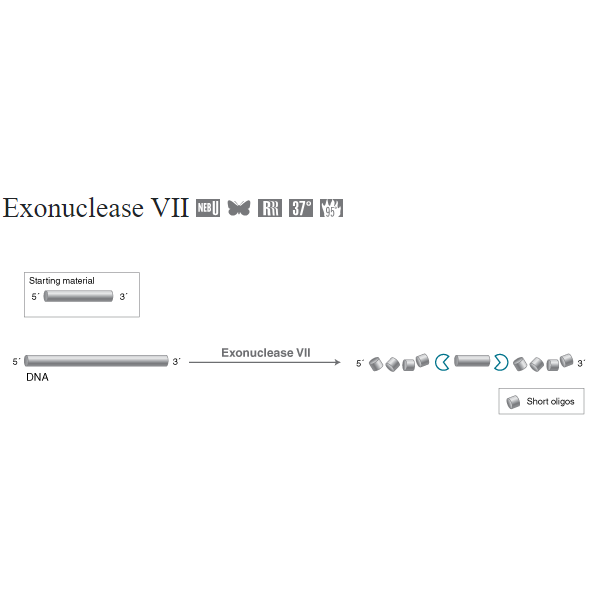M0379S, Exonuclease VII - 200 units
Exonuclease VII, (Exo VII) derived from E. coli, cleaves single-stranded DNA (ssDNA) from both 5´→3´ and 3´→5´ direction. This enzyme is not active on linear or circular dsDNA (1,2). It is useful for removal of single stranded oligonucleotide primers (3) from a completed PCR reaction when different primers are required for subsequent PCR reactions. Digestion of ssDNA by Exonuclease VII is metal-independent.
Exonuclease VII, (Exo VII) derived from E. coli, cleaves single-stranded DNA (ssDNA) from both 5´→3´ and 3´→5´ direction. This enzyme is not active on linear or circular dsDNA (1,2). It is useful for removal of single stranded oligonucleotide primers (3) from a completed PCR reaction when different primers are required for subsequent PCR reactions. Digestion of ssDNA by Exonuclease VII is metal-independent.
Product Source
An E. coli strain that carries cloned Exonuclease VII (XseA and XseB) genes from E. coli.
Exonuclease VII is ideal for:
Removal of primers with or without 3' or 5' terminal phosphorothioate bonds
Mapping positions of introns in genomic DNA
Removal of single-stranded DNA, leaving behind the double-stranded DNA in a sample
| Price | 1.128,00 RON (preturile sunt fara TVA) |
|---|---|
| Description |
Product Source
Removal of primers with or without 3' or 5' terminal phosphorothioate bonds |

 English
English




